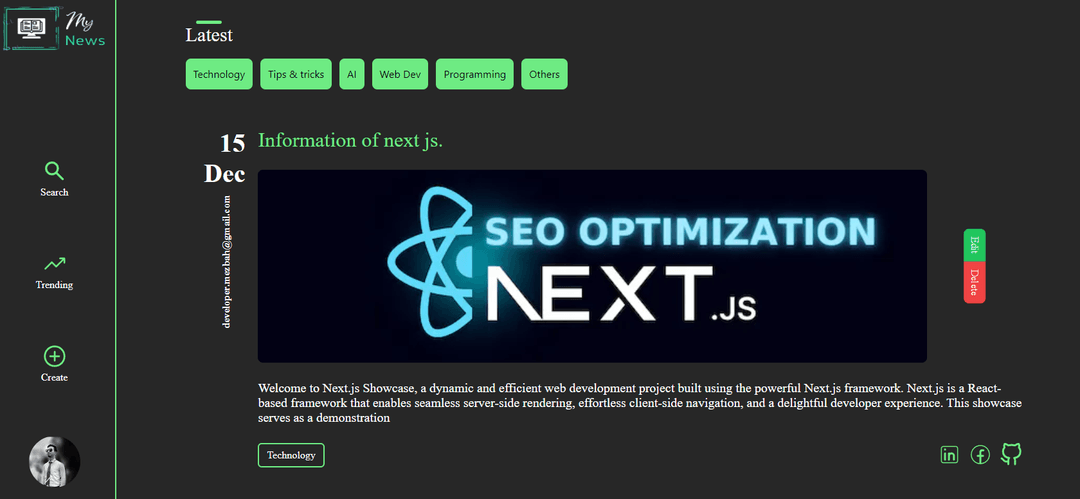This is Next.js Web application.
Mar 5, 2024
developer.mezbah@gmail.com
Author

React is a popular JavaScript library for building user interfaces, and Next.js is a framework built on top of React, providing additional features for server-side rendering, static site generation, and more. Here are some details about Next.js: Server-side rendering (SSR): Next.js allows you to render React components on the server side before sending them to the client, which can improve initial loading performance and search engine optimization (SEO). This is especially useful for applications that require dynamic content or personalized data. Static site generation (SSG): In addition to SSR, Next.js supports static site generation, where pages are pre-rendered at build time. This can result in even faster page loads and improved performance, especially for content-heavy websites or blogs. File-based routing: Next.js uses a file-based routing system, where each React component corresponds to a specific route. This makes it easy to organize and navigate through your application structure, without the need for complex routing configurations. API routes: Next.js provides built-in support for creating API routes, allowing you to easily create backend functionality within your Next.js application. These API routes can be used to fetch data, handle form submissions, or perform other server-side operations. Automatic code splitting: Next.js automatically code-splits your application, meaning that it only sends the JavaScript code necessary for the current page to the client, reducing initial page load times and improving performance. CSS support: Next.js has built-in support for CSS modules, CSS-in-JS libraries like styled-components, and global CSS files. It also supports Sass, Less, and other CSS preprocessors out of the box. TypeScript support: Next.js has excellent support for TypeScript, allowing you to write type-safe React code and catch errors at compile time. Optimized for production: Next.js optimizes your application for production by enabling features like image optimization, code minification, and automatic prefetching of resources. Community and ecosystem: Next.js has a large and active community, with a growing ecosystem of plugins, tools, and resources to help